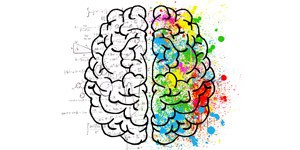By Manuel Guzmán

Manuel Guzmán is Professor of Biochemistry and Molecular Biology at Complutense University of Madrid, member of the Spanish Royal Academy of Pharmacy, and member of the Board of Directors of the International Association for Cannabinoid Medicines. His research focuses on the study of the mechanism of action and therapeutic properties of cannabinoids, especially in the nervous system. This work has given rise to more than one hundred publications in specialized international journals, as well as to several international patents on the possible therapeutic applications of cannabinoids as anticancer and neuroprotective drugs. He routinely collaborates with scientific reviewing and funding agencies.
The study of the neuroprotective effects of cannabinoids is one of the most active, encouraging and well-covered aspects of current biomedical research on these molecules, not only internationally but also in our country.
A clear reflection of this is the large number of articles published on the CANNA Foundation's website on the subject. Many colleagues (Javier Fernández-Ruiz, Ester Aso, Paco and Eduardo Molina-Holgado, Moisés García-Arencibia, Francisco Espejo-Porras, Susana Mato, Mariano García de Palau – I apologize if I have forgotten anyone), as well as myself, have disseminated current knowledge about the neuroprotective action of cannabinoids and their underlying mechanisms in neurodegenerative diseases such as Alzheimer's, Parkinson's and Huntington's, amyotrophic lateral sclerosis and multiple sclerosis. After examining these articles, any reader could exclaim with enthusiasm: "Cannabinoids are miraculous: we already have an effective treatment to stop those damn neurodegenerative diseases!". Unfortunately, there is one "small detail" that this reader may not have noticed: all of these studies have been conducted on mice, not humans. But is it really that important? Isn't one, ultimately, a 70 kg mouse-like mammal like Maus, the famous comic book character by Art Spiegelman?
The bitter experience of these last decades shows us that, for the diseases with the highest incidence and/or morbidity and mortality in our environment, such as cancer, cardiovascular diseases and neurodegenerative diseases, the numerous studies carried out on an infinite number of therapies in mice have been in practice unsuccessful in terms of their translation to patients. As I recounted in a previous article here at the CANNA Foundation, a dramatic example of this dichotomy between basic research and clinical reality is Alzheimer's disease. A recent review of the subject outlined some 300 different treatments that have led to a "cure" or improvement in transgenic mice models of the disease. However, to date, Alzheimer's disease has hardly any palliative treatments and, as we all know, there is no treatment that is not just curative, but even attenuates the course of the disease somewhat. Why is there such a drastic difference between mice and humans? Well, to begin with, "real" Alzheimer's disease, that is, human Alzheimer's disease, is much more complex and multifactorial (with numerous alterations, both genetic and acquired, neuronal, vascular, metabolic, endocrine, immune, etc.) than mouse models of Alzheimer's disease (based exclusively on one or very few genetic mutations and without genetic or environmental variability between individuals in the population). In addition, the course of human Alzheimer's disease, including its clinically asymptomatic phase, is much, much slower (typically decades) than that of mouse models of Alzheimer's disease (typically months). Thus, by the time symptoms appear and the disease is diagnosed, the damage to human nerve tissue is irreversible and no therapy has yet been able to counteract it. In contrast, in mice, researchers can predict the course of the model (I stress "model" again) of the disease and intervene at any time we wish, even in asymptomatic stages. What's more, mouse biology is significantly more robust than ours: they can, for example, regenerate tissue (including the nervous system), trigger immune responses (which act as "endogenous vaccines") or detoxify drugs (and therefore tolerate them at high doses) much more effectively than we can. In other words, and to answer the question above: no, unfortunately we are not like Maus or the little lab mice, we are much more complex and weaker animals than them.
What do we really know about the neuroprotective effects of cannabinoids in humans?
Yes, we all know about the palliative actions of cannabinoids that improve the quality of life of some patients with neurodegenerative diseases. The best established today, which in fact have led to the approval of Sativex and Epidiolex by the EMA and the AEMPS, are the attenuation of spasticity in patients with multiple sclerosis and the inhibition of seizures in some paediatric epileptic syndromes. But let's not go off on a tangent: what about neuroprotection, that is, the inhibition of neuronal dysfunction or death and, as a consequence, the slowing of disease progression? Unfortunately, the few controlled clinical studies conducted to date have not shown any noticeable effects of cannabinoids.
The most relevant example of such studies is, in my opinion, the CUPID (Cannabinoid Use in Progressive Inflammatory brain Disease) trial, which evaluated the effect of THC (dronabinol) administration in patients with primary or secondary progressive multiple sclerosis [1]. CUPID was a multicentre (27 UK hospital centres), randomised, double-blind, placebo-controlled trial. The patients (a total of 498, all between 18 and 65 years of age, of whom 493 could be analysed) were distributed in an approximate 2:1 ratio between the group receiving THC (maximum dose of 28 mg per day; oral) and the placebo group, treatments that were maintained for 36 months. In the end, despite being globally safe and well tolerated, THC had no beneficial effect on disease progression according to the different motor, behavioural and imaging scales analysed.
Another noteworthy clinical trial focused on acute brain injury. Specifically, the effect of the synthetic cannabinoid HU-211 (dexanabinol) on severe head injury was studied [2]. Actually, being precise, this compound is a cannabinoid more from a structural point of view (it is the enantiomer - "mirror image"- of the potent cannabinoid agonist HU-210) than from a functional point of view (since it acts pharmacologically as an NMDA receptor antagonist). But then again, it is a "cannabinoid", at least in the broad sense. A multicentre, randomised, double-blind, placebo-controlledtrial (86 hospital centres in 12 European countries, plus Australia, Israel and the USA) was conducted. The patients (a total of 861, all between 18 and 65 years of age, of whom 846 could be analysed) were distributed in an approximate 1:1 ratio between the group receiving HU-211 (single dose of 150 mg; intravenous injection) and the placebo group, administered no more than 6 hours after the trauma. In analogy with the CUPID trial, the cannabinoid, although globally safe and well tolerated, did not exert any beneficial effect on brain damage recovery according to the different neurological, functional and imaging scales used up to 6 months after the trauma. There was also no difference between HU-211 and placebo in the overall survival of patients.
These (apparent) discrepancies between preclinical and clinical research could perhaps be due not only to the aforementioned biological, pathological and experimental factors that differentiate mice from humans, but also to inadequate design of the clinical trials conducted so far with cannabinoids, which have been aimed more at evaluating their safety or palliative action than their efficacy in attenuating the progression of a disease. In this sense, it seems logical to suggest, for example, (a) that future clinical trials with cannabinoids be carried out at earlier stages of the disease under study; (b) that biomarkers (for example, molecular, functional or imaging) can be defined to predict a patient's sensitivity or resistance to treatment with cannabinoids and, in this way, "personalise" therapies and homogenise patient cohorts; (c) that cannabinoids can be combined with standard treatments in order to seek not a therapeutic effect per se of the former but an improvement in the efficacy and/or safety of the latter; (d) to increase, through observational studies, the rational understanding of the pattern of use of cannabis preparations by patients with neurodegenerative diseases, in order to find "clues" to optimize the cannabinoids to be used (alone or in combination?) and the target (sub)populations on which to act in subsequent clinical trials.
In short, the more than acceptable safety shown so far by cannabinoids in clinical trials should encourage more exhaustive, "finer" and more "creative" future studies to define whether these compounds could really be used as neuroprotective agents not in general, which in my opinion is a real pipe dream, but in some pathological situations and very specific subpopulations of patients. For example, in the CUPID trial, a posteriori analyses of the different patient subgroups suggested that THC may have exerted some beneficial effect in initially less debilitated patients and, conversely, a slightly negative effect in initially more debilitated patients [3]. Similarly, a prospective study with the synthetic cannabinoid KN38-7271, based on strict exclusion criteria and performed in a fairly homogeneous cohort of 97 patients with severe head injury, showed an improvement in overall survival early (1 month after trauma) but not late (6 months after trauma) [4].
All of the above reminds us once again that we must be extremely cautious in extrapolating the findings of basic research into clinical practice, and that, as far as patients are concerned, we must clearly distinguish between palliative effects and "remedial" or "curative" effects. However, do not be discouraged: the fact that cannabinoids exert palliative effects in some subpopulations of patients is highly positive in today's devastating landscape of degenerative diseases. For example, in Parkinson's disease, the best-established standard drug for decades, the well-known L-DOPA, exerts a palliative effect that can have a highly beneficial impact on the patient's overall functionality in the long term, although a neuroprotective role is not usually ascribed to this compound. In short, as you can see, for the moment we have very good news about neuroprotection by cannabinoids for mice, but certainly not so good news for humans. Hopefully, future research will improve this bleak clinical scenario.
References
[1] Zajicek J, Ball S, Wright D, Vickery J, Nunn A, Miller D, Cano MG, McManus D, Mallik S, Hobart J; CUPID investigator group (2013) Effect of dronabinol on progression in progressive multiple sclerosis (CUPID): a randomised, placebo-controlled trial. Lancet Neurol 12(9):857-865.
[2] Maas AI, Murray G, Henney H 3rd, Kassem N, Legrand V, Mangelus M, Muizelaar JP, Stocchetti N, Knoller N; Pharmos TBI investigators (2006) Efficacy and safety of dexanabinol in severe traumatic brain injury: results of a phase III randomised, placebo-controlled, clinical trial. Lancet Neurol 5(1):38-45.
[3] Ball S, Vickery J, Hobart J, Wright D, Green C, Shearer J, Nunn A, Cano MG, MacManus D, Miller D, Mallik S, Zajicek J. (2015) The Cannabinoid Use in Progressive Inflammatory brain Disease (CUPID) trial: a randomised double-blind placebo-controlled parallel-group multicentre trial and economic evaluation of cannabinoids to slow progression in multiple sclerosis. Health Technol Assess 19(12):vii-viii, xxv-xxxi, 1-187.
[4] Firsching R, Piek J, Skalej M, Rohde V, Schmidt U, Striggow F; KN38-7271 Study Group (2012) Early survival of comatose patients after severe traumatic brain injury with the dual cannabinoid CB1/CB2 receptor agonist KN38-7271: a randomized, double-blind, placebo-controlled phase II trial. J Neurol Surg A Cent Eur Neurosurg 73(4):204-216.


